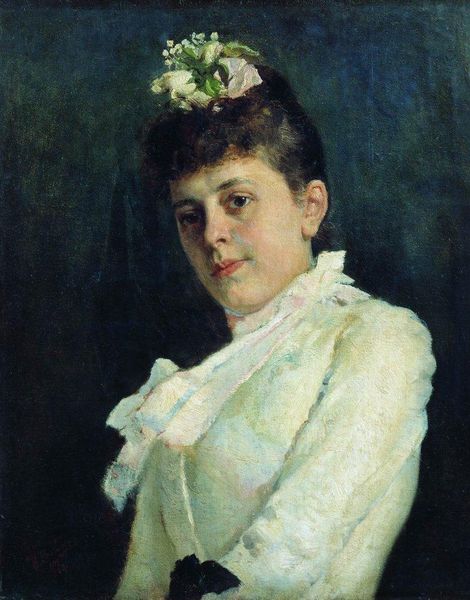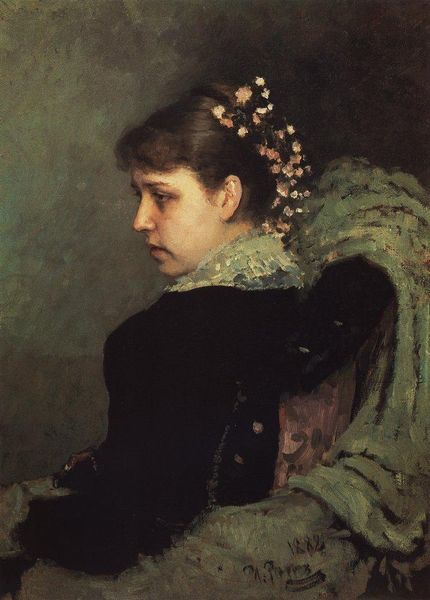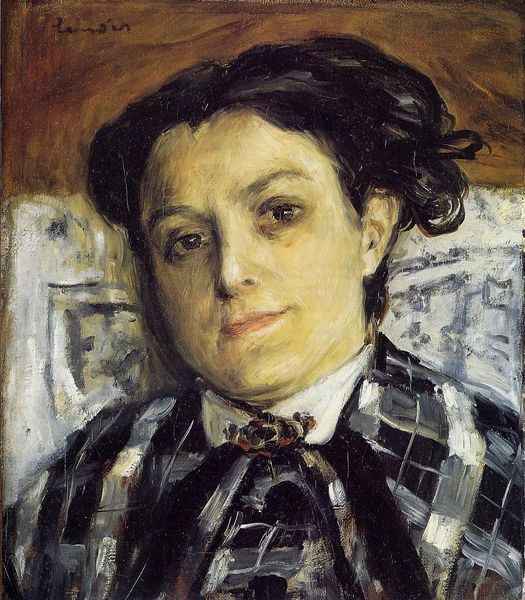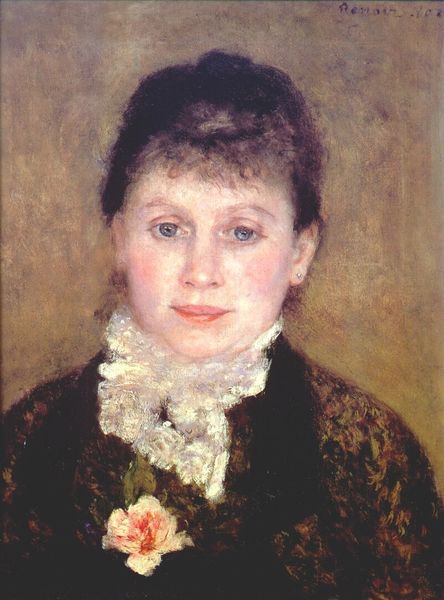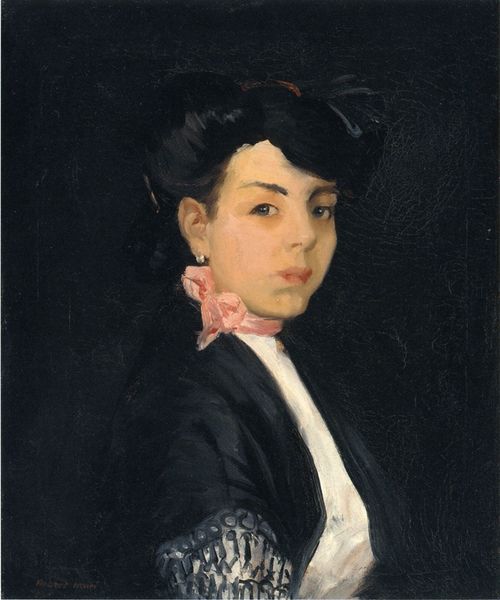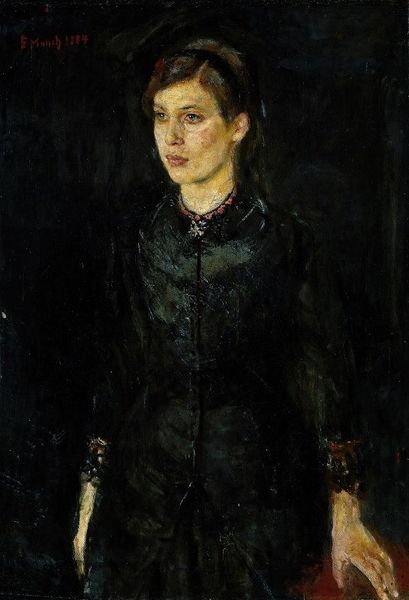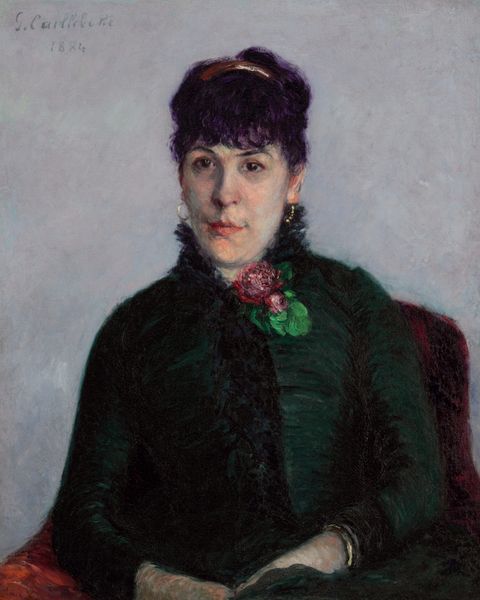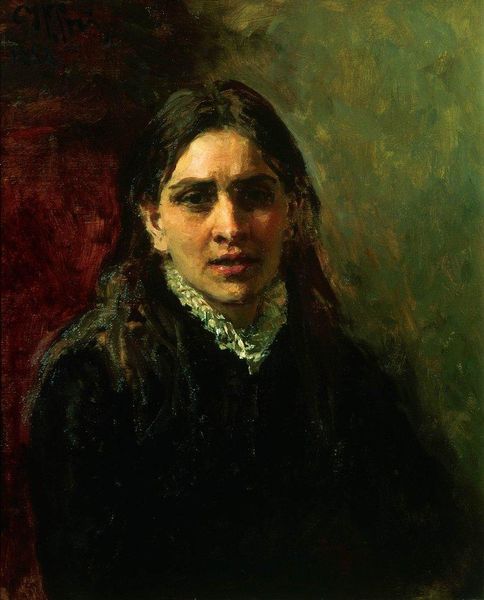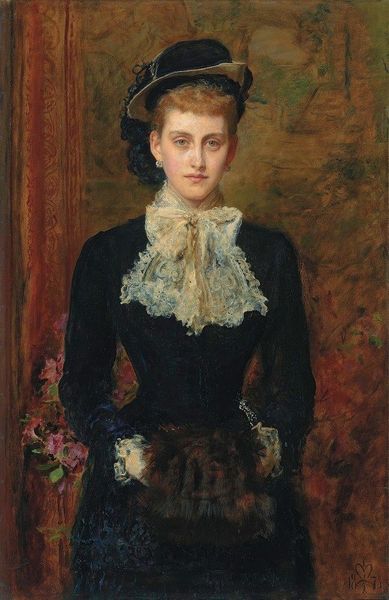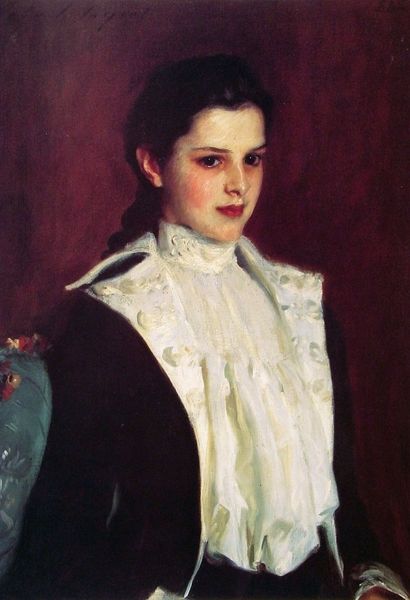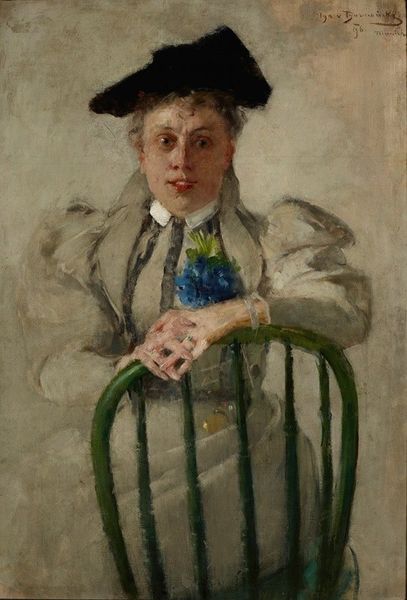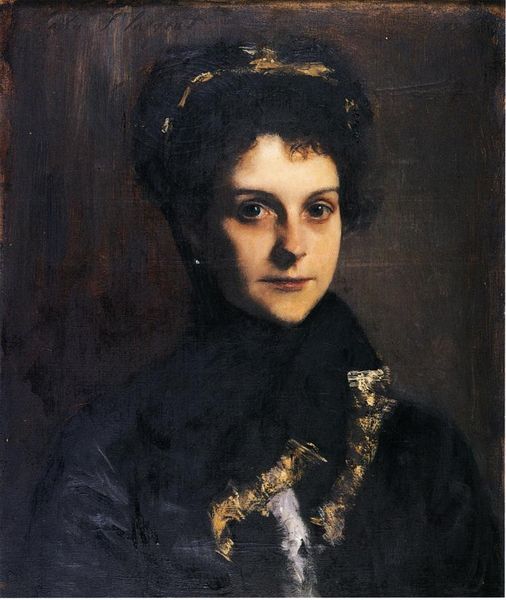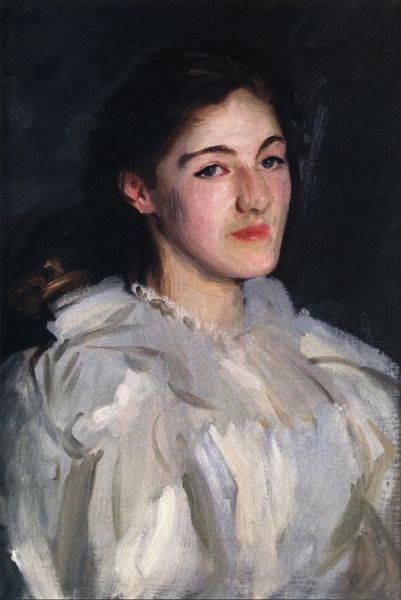
V.A. Repina 1876
0:00
0:00
ilyaefimovichrepin
Apartment Museum of Joseph Brodsky, Saint Petersburg, Russia
Copyright: Public domain
Editor: Here we have Ilya Repin’s "V.A. Repina," painted in 1876. It’s an oil portrait of a woman, likely someone from the artist's circle. I’m immediately drawn to the contrast between the dark, textured fur coat and the delicate lace at her neck. It creates a somewhat somber but luxurious feel. How do you see this work, in terms of the artist’s intentions, maybe? Curator: Well, if we look closely, the materials themselves are really doing a lot of work here. Consider that fur. It's clearly meant to project a certain social standing, an access to resources and the ability to consume luxury goods. But think about the labor involved in producing that garment. Where did it come from? Who trapped or farmed those animals? The painting obscures that whole network of production. Editor: That's interesting; I hadn't thought about it that way. So, you're saying the painting highlights a class divide, even in the way it represents clothing? Curator: Precisely! And what about the lace? Another carefully crafted object, often involving highly skilled, low-wage labor, often women. It signifies wealth and status, but at what cost, in terms of human effort and exploitation of certain labor practices? Repin doesn’t necessarily critique this outright, but he provides us with the raw material to consider these factors. Editor: So, you’re less focused on her personal expression and more on how the painting acts as a record of social and economic realities through its materiality? Curator: Exactly! It's not just about representing an individual; it's about revealing the complex web of materials, production, and social hierarchies woven into everyday life. It forces us to confront questions of value, consumption, and the unseen labor that underpins so much of what we consider "art" and "culture." Editor: I get it now. I'll never look at a fur coat or lace the same way again. It adds a whole other layer to my understanding of portraits from this time. Curator: Indeed. And it’s that shift in perspective, looking at the 'thing-ness' of the art itself, that allows us to access richer layers of interpretation.
Comments
No comments
Be the first to comment and join the conversation on the ultimate creative platform.
